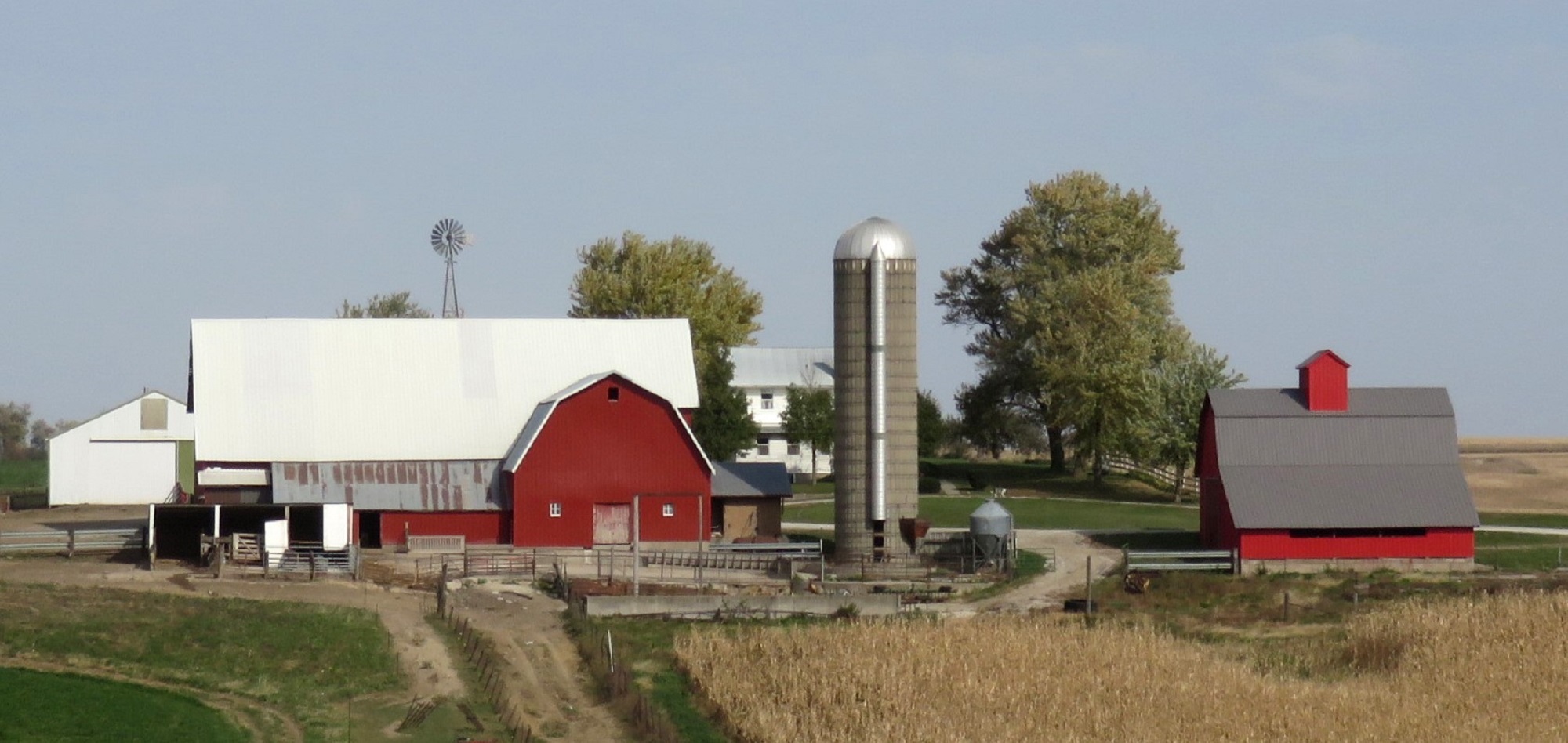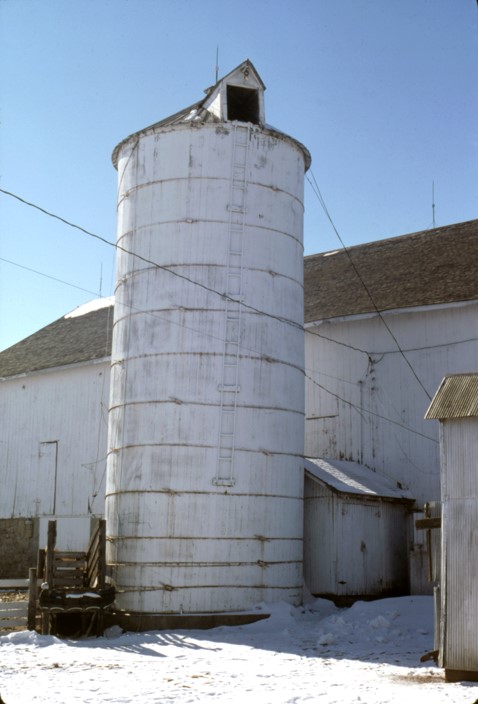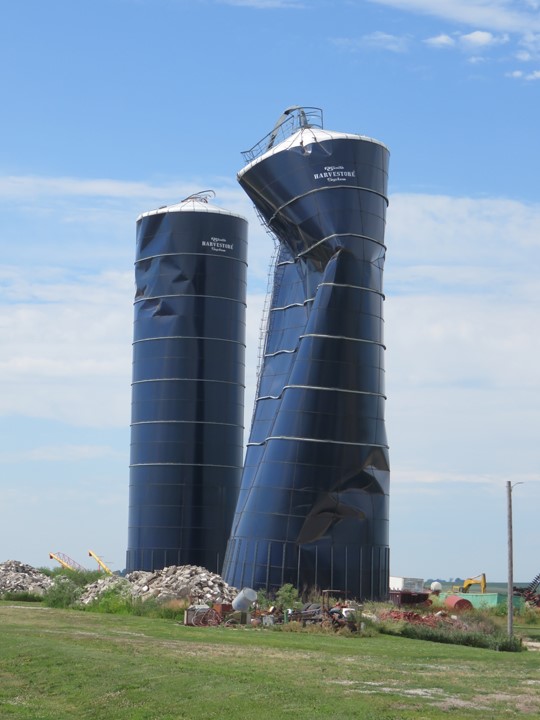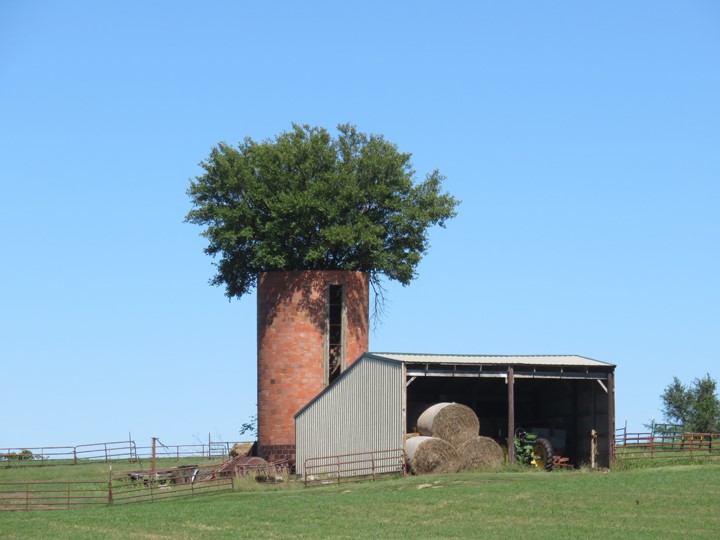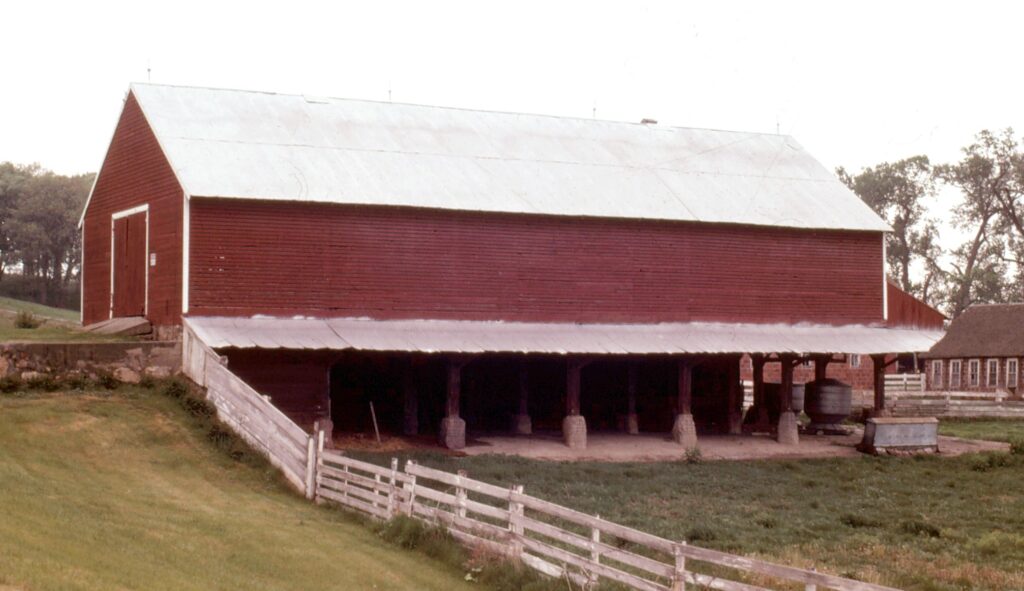
A corncrib saga. A disappearing corncrib, or is it? This corncrib in Guthrie County, built by William Sheeder around 1900, was a most unusual corncrib, as it was a drive in/back out design. Otherwise, it would be like driving off a second story.
It IS a corncrib with storage on each side of the drive, with the open slats still visible, despite some color deterioration in the slide. It was not in use in 1980 when this photo was taken.
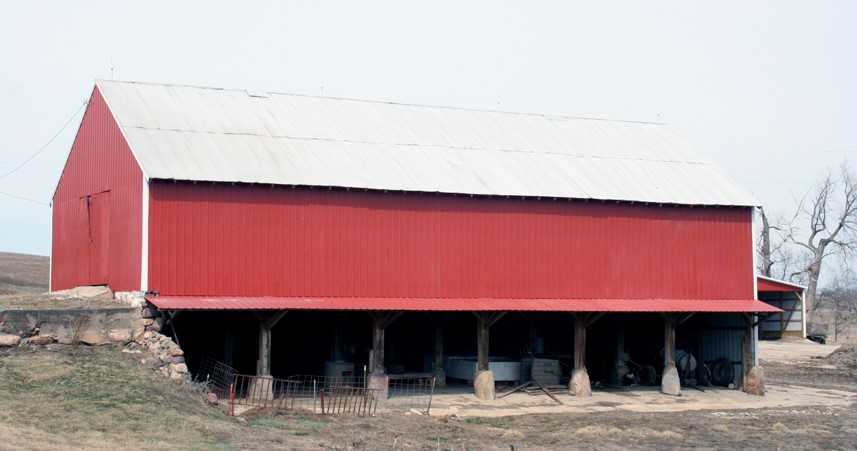
It got a new look when steel siding was added some years ago, which explains why it doesn’t look like a corncrib anymore. It was used for a few years for pigs and chickens, but when this photo was taken in 2013, it was being used for storage.
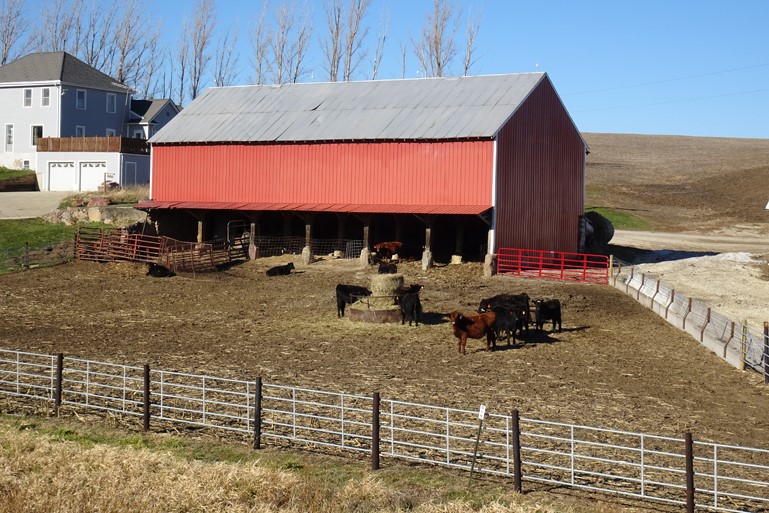
Great news! When driving past the farm in the fall of 2020 I noted that there is a new fence and it is again in use for calves. The location is west of Guthrie Center at 1769 Highway 44.
